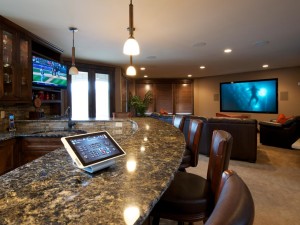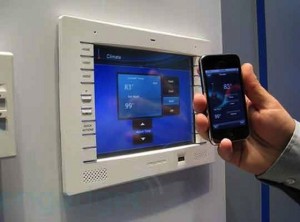The History of Home Automation
Technology in the home (hereafter referred to as home automation) has its roots in “building automation“, which was the practice of automating a commercial buildings heating, air conditioning, lighting, alarm system, and even different types of water filter systems. The purpose of such systems was to ensure the comfort of the occupants, reduce energy costs, streamline systems to make them function better together, and simply make things more efficient. These systems were typically controlled by one or two command centers, which were hooked up to web servers which were then attached to everything from lights to alarm systems. This interlinking meant that an operator could control all of the buildings critical systems from one central location, making things much easier to handle and effective in their operation.
It is unsurprising then that these automation systems soon caught the eye of the wealthy, who desired a little more flare and technological advancement in their homes. By the early 2000’s more and more households were starting to install home automation systems in one form or another.
Types of Home Automation Systems
Home automation can range from a full-house system, to simple things like automated door locks. Below we will discuss everything from the simple, to the massively complex.
A simple home automation system can be as cheap as $80 and come ready to plug and play. This means you can go down to your local Walmart or Target and pick up an automated locking system, take it out, install it, and be operational within an hour. These types of systems are good for those who want something on the more cost effective side, while still being effective enough to do what it is supposed to do. Typically these types of systems are controlled via a smartphone app that you install from the manufacturer. Some cons of these systems are unreliability due to lower cost, security vulnerabilities, and potential for malfunction. Most (if not all) of these can be avoided by purchasing a more expensive system, with the obvious downside being that it is a more expensive system.

A high end home automation system can cost you in excess of $100,000 depending which one you decide to buy. These will almost always involve having a technician come to your house and do the install manually. These systems also usually include full services. For example, a television that rises from the floor, lighting controlled by your smartphone, automated house-wide speaker system controlled from an iPad built into the wall, and much more. Unsurprisingly, the cost of these systems goes hand in hand with their reliability and security. In most cases, providers will offer warranties and come repair whatever breaks free of charge, offer free upgrades, and give 24/hour customer support. The higher end systems are typically for larger scale homes (because they will usually install miniature data centers right in your home) and will obviously be quite pricey. But what if you want something more than a cheap out-of-the-box system and do not have $100k laying around?
Medium-range home automation systems fall around $4,000-$5,000 depending on who you go to. They will include less than a full-scale high end system, but obviously much more than a modified doorknob in a box. The medium systems will typically include air, light, alarm, heat, and lock controls both through your smartphone and through a device hardwired inside of your house itself. These systems are great for those who are away from home frequently, as you can be alerted via phone message of intruders, fire, or other issues that may arise in your home wherever you are. You can then take the appropriate course of action from your phone. For example, in the case of a fire, you can turn on your sprinklers and alert the first department all at the push of a button. This could potentially save you much more in damages than the system itself cost, making it a worthy investment.

No matter how you decide to go, or what system you decide to go with, it is important to look at your needs and budget before making a choice. Full scale systems are about as much to uninstall as they are to install, so be sure you want it if you decide to go with that option. We recommend going with the medium systems to start with, as they are right in the middle and you can easily go up or down if you so choose.